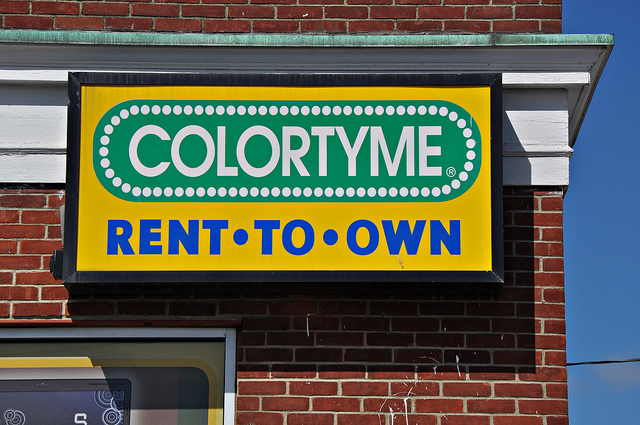Rent to Own: Opportunity or Trap?
First appearing as “hire purchase” in the United Kingdom in the 1930’s, Rent-to-own(RTO) has grown into an $8.5 billion dollar industry serving almost 5 million people. Making billions and serving millions doesn’t mean it’s a good deal, and the industry has long fought a reputation of making money off the backs of the poor. “Buyer beware” are always words to remember, so let’s take a look and find the disadvantages or possible benefits of such interactions.
To begin, Rent-to-own has had some issues over the years regarding total cost. The common belief was that customers who completed the terms of a RTO contract would end up paying double or triple the actual value of the item. For purposes of comparison, I priced a 60″ RCA smart television at WalMart, Aaron’s, and Rent-A-Center. While the total cost of ownership was close to $300 more at Aaron’s, and nearly $400 more at Rent-A-Center, the rental operations offered things Wal-Mart would not consider. Things like delivery and set up, or the option to return the item at any time during the contract are not possible with major retailers.
So yes, the overall cost of ownership is more expensive, but that cost is not incurred because RTO outfits wish to build wealth on the backs of the poor, it is there so that places like Aaron’s and Rent-A-Center can offer people merchandise with no credit check (as credit is not being extended), with relatively small down payments and weekly payments, free delivery and in-home set up, and the option to cancel the contract at any time. It even comes with 100% service during the life of the contract, even after the manufacturer’s warranty has expired.
Add that most RTO businesses offer “reinstatement benefits,” meaning items returned to the stores can be rented again at a later date with all past payments still applied to the item, and “early pay off” programs that can significantly lower the overall cost of the item.The use of these types of arrangements does not seem quite as illogical as they may have previously. In fact, regarding the aforementioned 60″ smart television, if a person rented that item and took advantage of Aaron’s “120 days-same as cash” program, the overall cost difference was right around $150. Considering the extras the programs do provide, $150 is not really out of line. Add that most RTO providers have “loyalty and referral programs” that could further reduce overall cost and it is a decent deal for people who use it.
If you do have cash and are looking to save a buck, most RTO businesses offer fairly steep discounts on “previously rented” or “lightly used” merchandise. On my trip to Aaron’s for this piece, I found a “scratch and dent” clothes dryer on sale for $100 cash. Yes, it had a dent but it was fully functional and would be a great benefit for a young family.
People who can afford to pay cash for large purchases, or people with stellar credit ratings do not require the services of RTO establishments. For everyone else, it appears to be a viable alternative. As always, one should do their homework and not enter into any contract without examining responsibilities or total cost, but the RTO industry appears to have successfully reformed itself from its more shady beginnings and has become a helpful process for millions of Americans.


